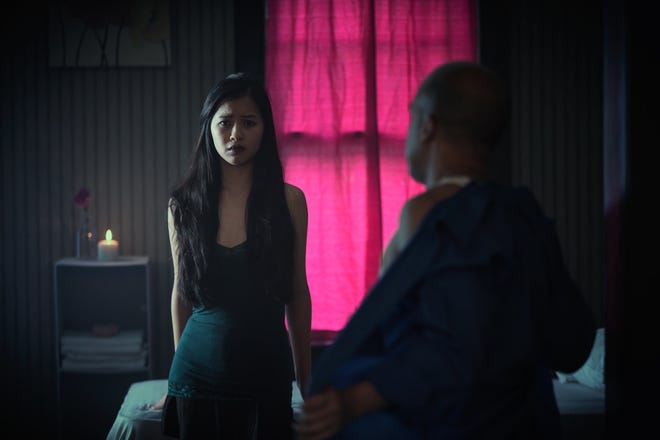Story from Blue Campaign: World Day Against Trafficking in Persons is Sunday, July 30

Do you know what human trafficking looks like? Myths and misconceptions make the crime difficult to spot. Human trafficking involves the use of force, fraud, or coercion to obtain some type of labor or commercial sex act.
Every year, millions of men, women, and children are trafficked worldwide – including right here in the United States. It can happen in any community. Victims and traffickers can be any age, race, gender or nationality.
Blue Campaign is the Department of Homeland Security's (DHS) national public awareness campaign that educates the public, law enforcement and other industry partners to recognize the indicators of human trafficking and respond to possible cases.
Call 1-866-347-2423 to report suspected human trafficking to Federal law enforcement.
Text HELP or INFO to BeFree (233733) to get help from the National Human Trafficking Hotline (1-888-373-7888).
July 30 is World Day Against Trafficking in Persons, the international day to raise awareness about how human trafficking impacts our communities and what can be done to combat the crime. To promote human trafficking awareness in the U.S., Blue Campaign invites the public to utilize their free online resources to learn about what human trafficking is, and how to recognize and report it.
Click here to learn some common indicators of potential human trafficking. Recognizing key indicators of human trafficking in your communities is the first step in identifying victims and can help save lives. Not all indicators are present in every human trafficking situation, and the presence or absence of any of the indicators is not necessarily proof of human trafficking.
For your safety, never attempt to confront a suspected trafficker directly or alert a potential victim to any suspicions. In the event of an emergency, call 911. It is up to law enforcement to investigate suspected cases of human trafficking.
Human trafficking crimes are often hidden in plain sight. Traffickers look to exploit people who are easy targets for a variety of reasons, including:
- Psychological or emotional vulnerability
- Economic hardship
- Lack of a social safety net
- Natural disasters
- Political instability
Traffickers might use the following methods to lure victims into trafficking situations:
- Violence
- Manipulation
- False promises of well-paying jobs
- Romantic relationships
The trauma caused by traffickers can be so great that exploited individuals may not identify themselves as victims or ask for help, even in highly public settings. Obstacles such as fear of traffickers and law enforcement, language barriers, and lack of resources can keep victims from seeking help.
Everyone has a role to play in combating human trafficking. Our resources page has free catalog of ready-to-use materials that can be distributed and displayed in your community. You can view and share Blue Campaign's awareness videos for more in-depth human trafficking education.
You can download the Blue Campaign indicator card to keep in your wallet for reference on the go. The easy-to-carry indicator card includes information about observable signs of sex and labor trafficking and how to report them to law enforcement.
Spread the word on July 30 to raise awareness of human trafficking and help stop this horrible crime. Call 1-866-347-2423 to report a tip and visit www.dhs.gov/bluecampaign for more information. See. Call. Save.
If you or someone you know is a victim of human trafficking, contact The National Human Trafficking Hotline (1-888-373-7888) or text HELP or INFO to BeFree (233733).
This “Eyes on Trafficking” story is reprinted from its original online location.
Fair Use Notice: The PBJ Learning Knowledge Vault is dedicated to advancing understanding of various social justice issues, including human trafficking and related topics. Some of the material presented on this website may contain copyrighted material, the use of which has not always been specifically authorized by the copyright owner. We are making such material available in our efforts to promote education and awareness of these important issues. There is no other central database we are aware of, so we put this together for both historical and research purposes. Articles are categorized and tagged for ease of use. We believe that this constitutes a ‘fair use' of any such copyrighted material as provided for in section 107 of the US Copyright Law. In accordance with Title 17 U.S.C. Section 107, the material on this site is distributed without profit to those who have expressed a prior interest in receiving the included information for research and educational purposes. For more information on fair use, please visit: “17 U.S. Code § 107 – Limitations on exclusive rights” on Cornell Law School's Legal Information Institute.
 ABOUT PBJ LEARNING
ABOUT PBJ LEARNING
PBJ Learning is a leading provider of online human trafficking training, focusing on awareness and prevention education. Their interactive Human Trafficking Essentials online course is used worldwide to educate professionals and individuals how to recognize human trafficking and how to respond to potential victims. Learn on any web browser (even your mobile phone) at any time.
More stories like this can be found in your PBJ Learning Knowledge Vault.
EYES ON TRAFFICKING
This “Eyes on Trafficking” story is reprinted from its original online location.
ABOUT PBJ LEARNING
PBJ Learning is a leading provider of online human trafficking training, focusing on awareness and prevention education. Their interactive Human Trafficking Essentials online course is used worldwide to educate professionals and individuals how to recognize human trafficking and how to respond to potential victims. Learn on any web browser (even your mobile phone) at any time.
More stories like this can be found in your PBJ Learning Knowledge Vault.

